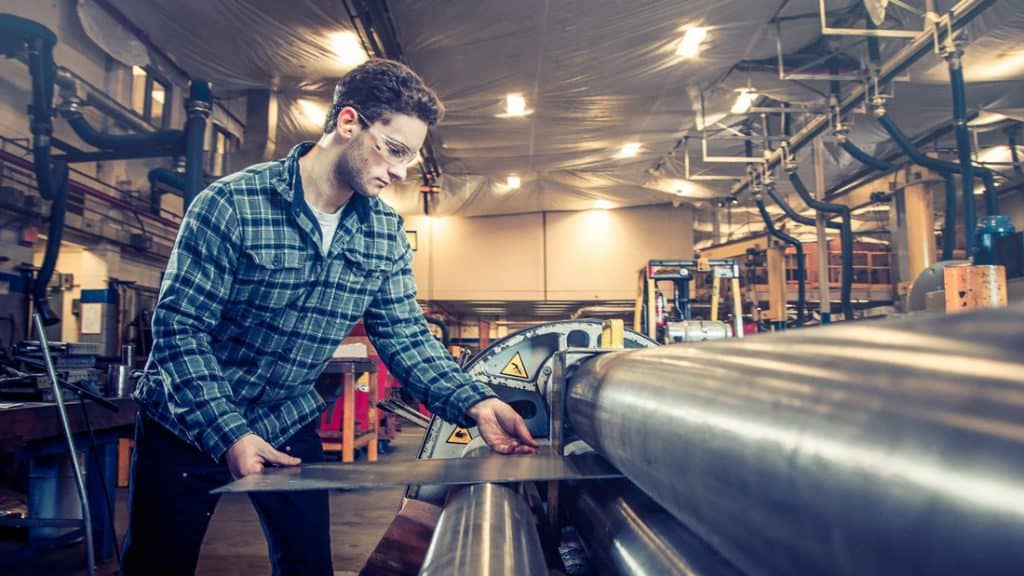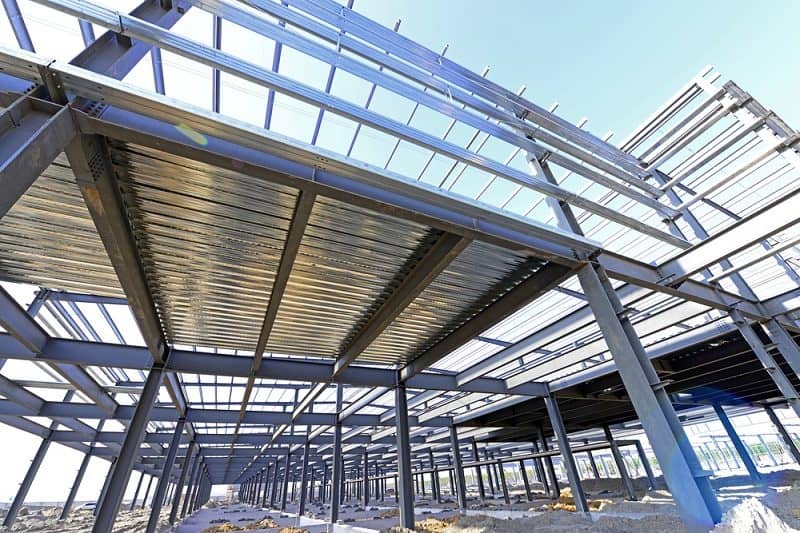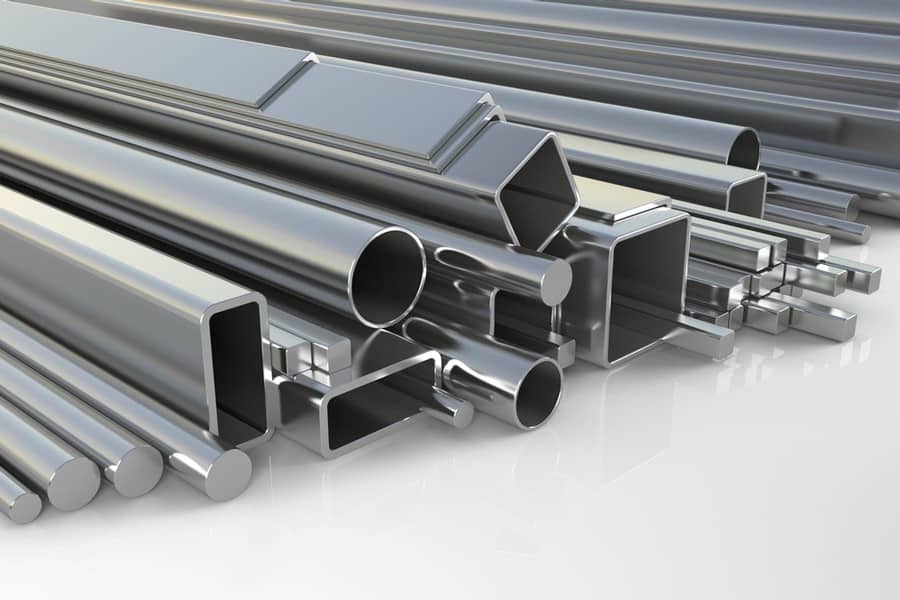What is Metal Fabrication?

Have you ever wondered what goes into the manufacture of metal parts and objects? Whether you are considering the sheet metal cladding on your house or the fork at your place setting, the manufacturing of metal items is referred to as “metal fabrication.”
COMPARE PRICES & SAVE UP TO 33%
In this guide, you will learn more about metal fabrication including the techniques involved, the types of objects and parts that metal fabricators can make, and the industries where metal fabrication is used. This of course includes residential and commercial construction.
What Do Metal Fabricators Create?
Pretty much any metal object or component you can think of is created through metal fabrication.
Some common examples include:
- Sheet metal
- Brackets
- Nuts, screws and bolts
- Kitchen cutlery
- Tools
- Auto parts
- Pipes and fittings
The raw materials which go into creating this vast array of metal objects include flat metal, welding wire, sectional metal, plate metal, and more.
What Processes and Techniques Do Metal Fabricators Use?
Quite a few different methods are involved in the metal fabrication of objects and parts. These different techniques require metal workers falling into a variety of categories who have specialized in different aspects of metal fabrication.
Here are some of the processes and techniques involved in fabricating metal objects:
Reduction Techniques
- Punching: As you might guess, this process refers to punching holes in rolled or sheet metal. The removed portion of metal is called the “slug.” It can be recycled for other purposes.
- Blanking: A related process is called “blanking,” and is used on strip or sheet metal. Whereas the sections punched out using punching are the excess, in this case, they are the intended work material, and are called “blanks.” Usually, this technique is used on aluminum and other soft types of metal.
- Shearing: Using blades, workers cut straight lines to properly size and shape aluminum, bronze, brass, steel, or stainless steel, generally in the form of sheet metal or flat metal.
- Notching: Shearing is good for general downsizing and shaping of metal, but it isn’t adequate for detail work, or cuts at every angle. For that, metal fabricators turn to notching. Sometimes this process is also referred to as “nibbling.” Usually, it is used on rolled or sheet metal.
Shaping
- Folding: This is exactly what it sounds like—folding a piece of metal to make an angle.
- Stamping: This is kind of like punching, but no hole is made. Instead, the fabricator simply creates an indentation in the metal. The best raw materials for this process are rolled and sheet metal. Anytime a process like stamping is used to modify the shape of metal without any punching, cutting or shearing, it is referred to as “forming.”
Related Techniques
- Machining: What if you do not have rolled or sheet metal to work with, but rather metal blocks? If that is the case, the process for reducing and shaping the metal is machining, which can include milling, drilling and lathing as techniques. Whether or not machining is considered to be a part of fabricating or its own branch of metalworking depends on who you ask. Regardless, it is common for fabrication and machining to take place in the same facility.
- Welding: When it is necessary to connect two pieces of metal to create a solid object, the technique used is called welding. Sometimes, laypeople believe that metal fabrication is the same thing as welding, but you can now see that fabricating incorporates a lot more than just that.
So, this gives you a much better idea of what takes place at metal fabrication facilities. Many different techniques go into sheet metal fabrication, structural steel fabrication, and other metal fabrication tasks.
What Industries Use Metal Fabrication?
Even though a lot of people do not put much thought into how their metal objects and components are produced, metal fabrication is one of the most broad-reaching forms of industrial craftsmanship.
Commercial Metal Fabrication
Quite a lot of metal fabrication falls under the commercial sector.
A couple of obvious examples include:
- Automotive industry: Vehicle parts and appliances, tools, etc.
- Home goods: Appliances, cutlery, metal cookware, etc.
So, tonight when you sit down to eat dinner and you pick up your spoon or fork, put some thought into the metal fabrication processes which went into its creation.
Likewise, if you grab a metal tool to make a quick home repair afterward, that is another object which was created through metal fabrication.
Industrial Metal Fabrication
Within the industrial sector, metal fabrication is used to create parts and machinery which in turn are then used to create other manufactured goods.
Take a band saw, for example. Metal fabrication is used to create this tool.
In a factory, the band saw is then used in the manufacture of other items.
Structural Metal Fabrication

Finally, there is custom metal fabrication for residential construction as well as commercial construction. Buildings can incorporate a wide variety of metal components, all of which are prepared through fabrication, machining and similar processes before being shipped out for assembly.
Prefabrication for Metal Buildings
This comes around to the main topic that we focus on here on our site, which is metal building construction.
Metal buildings have taken off over recent years because they are economical, fast and easy to build, and offer numerous additional benefits.
Specifically, you can save time and money by purchasing a prefabricated metal building.
“Prefab construction” is a term that you’ve likely heard thrown around a lot these days, but you now have a much more concrete idea what it means.
When you purchase a prefabricated structure, all of the work needed to create the metal panels and other components (i.e. I-beams, bar joists, trusses, purlins, girts, etc.) of the building is handled in advance in a factory.
That means that no metal fabrication processes need to take place on-site. Because all fabrication takes place in a controlled factory setting, a company can make sure that all parts which are shipped out are engineered to the same strict quality criteria.
All that is necessary once the prefabricated components are shipped out to the site is to assemble them. In some cases, such as when building a Quonset hut, this is such a simple process that even a relatively unskilled laborer working alone can handle the task.
Prefab metal construction can be used for the following types of buildings:
- Residential homes
- Aircraft Hangars
- Agricultural structures such as barns or silos
- Garages
- Barndominums
- Carports
- Churches
- Retail buildings
- Fitness centers
Those are just a few examples. You can build pretty much any type of structure using prefabricated metal components. It is one of the most versatile construction methods out there.
Custom metal buildings can be very large, very small, or anything in between. Whether you want to build a casino or a tiny house, metal prefab is a great choice.
Additionally, the appearance of a finished steel prefabricated structure depends entirely on the client’s vision. Metal prefab structures can look modern or classic with pretty much any type of finish you can imagine.

